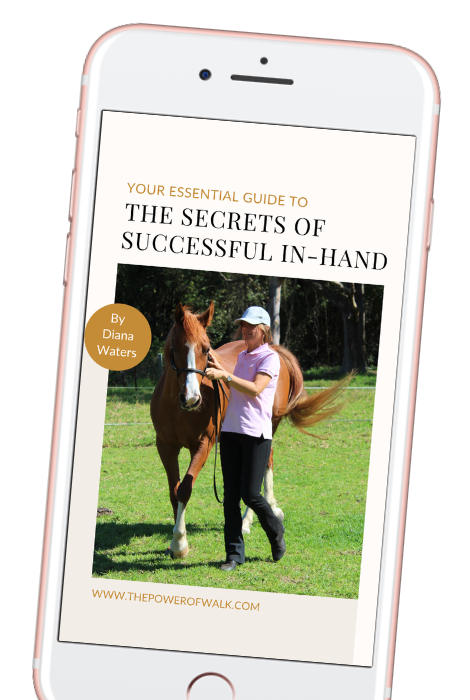
What is In-Hand?
In-hand is not lungeing, long-reining, leading or groundwork with a halter and rope, although these all have their place.When we are doing in-hand, we don’t drive or draw, but synchronise and move with.In-hand is a deep and close up connection experience.In-hand is also a way of showing the horse what we want so that they understand better when we ride them (although it is incredibly beneficial to do just on its own as well!)It is a way of getting the horse comfortable with allowing us in close proximity and to influence each part of their body, just as we will when we ride.From the ground we can be incredibly precise with our ask and our release. We can use our own balance of our own body to show them, without being influenced in the slightest by the balance of his body.The horse is drawn to our balanced, calm, grounded self and begins to mirror our gait and posture. This strong connection happens almost instantly as we pick up the reins, because don’t forget the horse is born with fully present focus and is always seeking it in others.They learn that they can seek the connection with this human, and they learn to find the place of calm focus and meet us there, ready to accept our directions.We can see and feel where their body is and how it can be more balanced, ready to carry a rider and move with lightness and balance, and then we can show him.They get the idea that they can trust us with their body and that their body feels good and safe when we guide it. They begin to discover that the postures we show them feel good. They learn to seek those same postures out in the field, so that crookedness and pain start to melt away. When we ride, they will seek that same feeling of closeness, safeness and trust in our guiding energy.The art of in-hand lies in the ability to meditate and become completely immersed in the here and now. In order for this, we need to have practised our own balance and posture, smoothness of gait, handling of the reins and whip, where and how to position our body and touch the horse, what the horse should feel like, so that they are second nature and thoughts do not get in the way of feeling.Lungeing, leading, long reining and ground work can all help with these skills and should be used to learn the skills, but in my experience none of them come close to the magic of classical in-hand.



